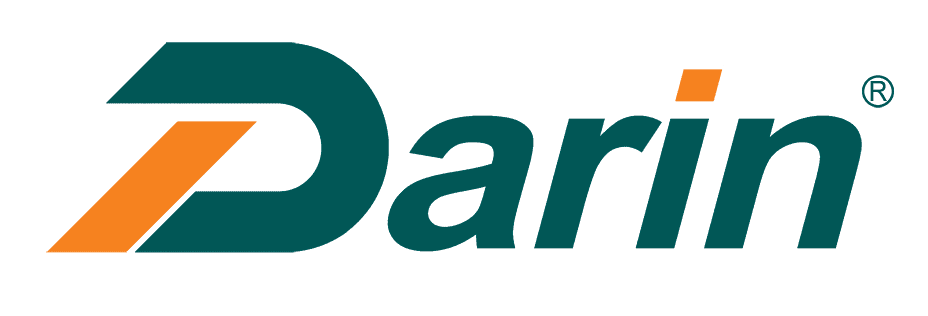 A view of a state-of-the-art wet pet food manufacturing plant showcasing the intricate process.[/caption]
A view of a state-of-the-art wet pet food manufacturing plant showcasing the intricate process.[/caption]
Producing high-quality pet food is not as simple as mixing meat and grains—selecting the right raw materials is crucial. Many producers struggle with ingredient inconsistency, contamination risk, and nutritional imbalances. These issues can result in pet health problems, product recalls, and customer dissatisfaction. Fortunately, understanding and choosing the right raw materials can solve these issues and elevate your product quality to meet international standards and diverse market needs. This article dives deep into what raw materials are used in pet food production and how each contributes to product safety, nutrition, and profitability.
The raw materials used in pet food production include animal protein sources (like chicken, beef, and fish), plant-based carbohydrates (such as rice, corn, and sweet potatoes), fats and oils, fiber sources, vitamins, minerals, and functional additives. These ingredients are carefully selected to ensure nutritional balance, palatability, and compliance with pet food safety regulations.
Whether you're a large manufacturer or just starting your pet food line, knowing your ingredients is the first step toward producing safe, effective, and competitive products. Let’s explore how each category of raw materials contributes to premium pet food formulations.
Corn is a common filler in pet food with no nutritional value.Fałsz
Corn provides carbohydrates, essential fatty acids, and antioxidants, making it a nutritious ingredient when properly processed.
Understanding the Core Raw Materials in Pet Food
Animal Protein Sources – The Foundation of Pet Nutrition
Proteins are vital for pets’ muscle development, immune function, and metabolic processes. Animal-based proteins are the most biologically complete for dogs and cats. The most commonly used animal protein ingredients include:
| Źródło białka | Opis | Protein Content (%) | Common Use Case |
|---|---|---|---|
| Chicken meal | Rendered, concentrated chicken protein | 60–65% | Kibble base |
| Fish meal | Ground, dried fish rich in omega-3 | 62–72% | Skin/coat health |
| Beef/lamb | Fresh or frozen red meat cuts | 18–22% | Flavor variation |
| Poultry by-product | Includes organs, necks, feet (ground) | 52–58% | Budget-friendly formulas |
| Insect protein | Sustainable, high-protein larvae powders | 55–65% | Novel protein diets |
These ingredients are either fresh, frozen, or rendered into meals. Quality is critical—poorly processed animal protein can lead to digestive issues or nutrient loss.
Plant-Based Carbohydrates – Energy and Digestive Health
Though pets are primarily carnivores (especially cats), carbohydrates play an important role in energy and digestive health. Common carbohydrate ingredients include:
| Źródło węglowodanów | Key Nutrients | Korzyści |
|---|---|---|
| Rice (white/brown) | Easily digestible | Quick energy source |
| Corn and cornmeal | Carbs, linoleic acid | Supports energy and healthy skin |
| Barley and oats | Beta-glucans | Aids in digestion and cholesterol |
| Słodkie ziemniaki | Fiber, antioxidants | Grain-free option, supports gut |
| Peas and lentils | Protein, fiber | Popular in grain-free formulas |
Each of these sources affects the texture, moisture, and expansion rate during extrusion, so they're carefully selected based on the final product requirements.
Grain-free pet foods are always healthier for pets.Fałsz
Grain-free pet foods are useful for pets with allergies, but grains like rice or barley can be nutritious and easily digestible for many animals.
Fats and Oils – Flavor, Palatability, and Energy
Fats not only provide concentrated energy but also improve flavor and support skin and coat health. Most pet foods include:
| Fat/Oil Type | Main Components | Common Function |
|---|---|---|
| Tłuszcz z kurczaka | Omega-6 fatty acids | Skin health, palatability |
| Fish oil (salmon oil) | EPA, DHA | Brain, heart, and joint health |
| Vegetable oils | Linoleic acid, Vitamin E | Vegan formulas, coat conditioning |
| Pork/tallow fat | High energy, savory flavor | Palatability enhancer |
Fats are typically sprayed onto kibble post-extrusion using a vacuum coating system to ensure uniform application and shelf life.
Fiber Sources – Digestive Regularity and Stool Quality
Fiber plays a role in stool formation, gut microbiome health, and weight control. Common fiber ingredients include:
| Źródło błonnika | Soluble/ Insoluble | Role in Pet Diet |
|---|---|---|
| Beet pulp | Semi-soluble | Firm stools, gut flora balance |
| Pea fiber | Insoluble | Satiety, low-glycemic impact |
| Pumpkin | Soluble | Natural fiber, palatability enhancer |
| Cellulose powder | Insoluble | Caloric dilution in diet formulas |
Balanced fiber inclusion (2–5%) ensures optimal digestion and nutrient absorption.
Vitamins, Minerals, and Functional Additives
These micro-nutrients ensure that pet food meets AAFCO or FEDIAF nutritional profiles. They are usually added as pre-mixed supplements to ensure dosage accuracy. Some examples:
| Typ dodatku | Funkcjonować |
|---|---|
| Vitamin premix (A, D, E) | Bone, vision, immunity |
| Calcium carbonate | Bone strength, metabolic regulation |
| Tauryna | Required amino acid for cats |
| Glucosamine/Chondroitin | Joint support for senior pets |
| Probiotics/Prebiotics | Gut flora balance and immunity |
| Yucca schidigera extract | Odor control and digestion aid |
Mineral and vitamin balance is strictly regulated, and over-supplementation can be harmful, so precise mixing through automated feeders is critical.
Natural and Synthetic Flavorings
Palatability is one of the most decisive factors for pet owners. Dogs and cats won't eat what they don’t like. Flavorings may include:
- Hydrolyzed liver powders (natural flavorings)
- Yeast extracts (umami-enhancer)
- Smoke flavoring (for grilled/meaty taste)
- Encapsulated flavor oils (to mask bitterness from supplements)
Advanced palatant spraying equipment ensures even coating and long-lasting aroma.
Nutritional Breakdown Example – Adult Dog Kibble Formula
Here is a simplified formulation for a balanced adult dog food:
| Składnik | Inclusion % |
|---|---|
| Chicken meal | 25% |
| Brązowy ryż | 20% |
| Cornmeal | 15% |
| Tłuszcz z kurczaka | 10% |
| Beet pulp | 5% |
| Vitamin & mineral premix | 2% |
| Yeast extract (palatant) | 1% |
| Fresh vegetables (carrot, pea) | 10% |
| Olej rybny | 1% |
| Other (water loss, coating) | 11% |
| Łącznie | 100% |
This combination provides protein (22–26%), fat (10–14%), and balanced vitamins/minerals per AAFCO guidelines.
Ending Summary
The success of any pet food product begins with the raw materials. From premium meat proteins and digestible carbs to functional additives and oils, each component plays a crucial role in creating safe, nutritious, and palatable pet food. The best manufacturers not only select high-quality ingredients but also process them correctly using automated, hygienic equipment to preserve nutrients and ensure product safety. Whether you're formulating for puppies, adult dogs, cats, or niche diets, mastering your ingredient selection is the key to commercial and nutritional success.
Ready to Build a Winning Pet Food Formula?
Get in touch with us today for expert consultation on sourcing high-quality raw materials and designing optimized pet food formulas. We supply complete pet food production lines, formulation support, and global export solutions. Let’s help you launch or upgrade your pet food brand with precision and confidence!
FAQ
What are the main raw materials used in pet food production?
A1: The primary raw materials in pet food production include animal proteins (like chicken, beef, lamb, or fish), plant-based proteins (soy, peas), grains (corn, rice, barley), fats and oils (chicken fat, fish oil), vitamins and minerals, and functional additives (prebiotics, antioxidants). These ingredients are chosen to meet specific nutritional standards and ensure a balanced diet for pets.
Why are animal by-products used in pet food?
A2: Animal by-products, such as organ meats and bone meal, are nutrient-rich and cost-effective sources of essential vitamins, minerals, and amino acids. While often misunderstood, these ingredients are safe and valuable when processed correctly, and are commonly used in both dry and wet pet food to meet AAFCO nutritional guidelines.
Are grains necessary in pet food?
A3: Grains like rice, corn, and oats serve as carbohydrate sources, providing energy and aiding in digestion. While some pets benefit from grain-free diets due to allergies or sensitivities, grains are generally safe and beneficial for most dogs and cats unless advised otherwise by a veterinarian.
What role do additives play in pet food?
A4: Additives in pet food include preservatives, flavor enhancers, coloring agents, and nutritional supplements. Preservatives like tocopherols (Vitamin E) extend shelf life, while added vitamins and minerals ensure the food meets complete and balanced nutrition standards. Natural additives such as prebiotics also help with gut health.
How are pet food raw materials sourced and quality-checked?
A5: Raw materials are typically sourced from certified suppliers and must pass strict quality control protocols, including microbiological testing, nutrient analysis, and traceability audits. Reputable manufacturers follow safety standards set by AAFCO, the FDA, or FEDIAF to ensure the safety and nutritional adequacy of pet food products.
Referencje
AAFCO – Pet Food Ingredient Definitions - https://www.aafco.org/consumers/what-is-in-pet-food/
FDA – Pet Food Ingredients & Labeling - https://www.fda.gov/animal-veterinary/resources-you/fda-regulation-pet-food
Pet Food Institute – Understanding Ingredients - https://www.petfoodinstitute.org/pet-food-matters/whats-in-pet-food/
Tufts Veterinary Nutrition – Homemade Diets and Ingredients - https://vetnutrition.tufts.edu/
PetMD – What’s in Pet Food - https://www.petmd.com/dog/nutrition/evr_dg_understanding_dog_food_ingredients
National Research Council – Nutrient Requirements for Dogs & Cats - https://www.nap.edu/catalog/10668/nutrient-requirements-of-dogs-and-cats
The Spruce Pets – Pet Food Ingredients Explained - https://www.thesprucepets.com/common-pet-food-ingredients-5215915
Dog Food Advisor – Ingredient Glossary - https://www.dogfoodadvisor.com/dog-food-ingredient-glossary/
FEDIAF – European Guidelines for Pet Food - https://fediaf.org/self-regulation/nutritional-guidelines.html
Canine Journal – What’s in Dog Food - https://www.caninejournal.com/whats-in-dog-food/


